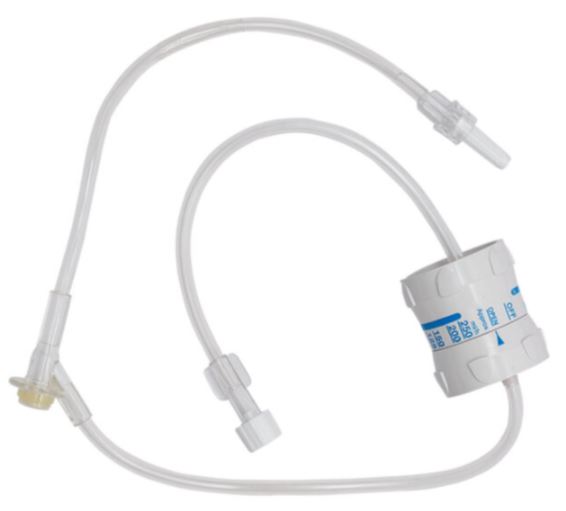FLOW REGULATOR, for gravity infusion
Valid Article
FLOW REGLATOR, for gravity infusion
This device doesn't replace the nurse's responsibility to monitor the infusion of the prescribed therapy = you still need to count the drops to match the set rate on the dial.
It does not replace electric syringes or volumetric pumps (with much higher accuracy and safety).
Definition
A manual device designed to control the infusion rate through gravity intravenous administration infusion sets. It typically consists of a mechanism that regulates the flow using a calibrated dial that permits control of the flow rate in a given range.
The device is used in-line with gravity infusion administration sets. This is a single-use device.
Specifications
Technical specifications
- Extension set with flow controller for infusion, with or without injection site
- Adapts to all conventional infusion tubing, Luer connection
- Speed from 5 to 250 ml / hour
- Sterile, for single use
Instructions for use
See SOP in the nursing library:
- 15.13.D. SOP Flow regulator adult patient use V1 2023 EN.pdf
- 15.12. SOP Methods of Administering Intravenous Medications and Fluids V1 2022.pdf
Precautions for Use
Do not use Rate Flow Regulator for blood transfusion or for highly viscous fluids.
Drop rate is affected by various factors such as hydrostatic pressure (height of the infusion bottle above the patient), venous pressure, patient movement, catheter/needle size and location, fluid viscosity, pressure in fluid container, fluid head-height etc. Changes in any of these factors during infusion can lead to variations in the drop rate.
MSF requirements
Allows greater accuracy of the infusion rate
The use of the different IV flow devices:
When to use | Precautions for use | |
IV set only |
|
|
IV set + gravity flow regulator |
|
|
Syringe pump |
|
|
Infusion pump |
|
|






